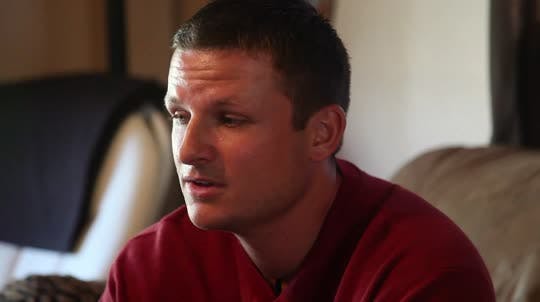The meeting took place in the summer of 2014 in the St. Cloud office of the Stearns County sheriff.
All of the key players were there: from the FBI and the state Bureau of Criminal Apprehension to Stearns County itself as lead agency.
The subject — Jacob Wetterling. The mission — to take another hard run at solving the decades-old mystery of what happened to the 11-year-old boy who was abducted by a masked man in the dark of an October night in 1989 and never seen again.
The decision to meet evolved from a proposal by the FBI to review the cold case in hopes of resolving one of the most shocking crimes in recent Minnesota history.
On Thursday, authorities disclosed the result of those efforts at a news conference in Minneapolis, charging Daniel James Heinrich, 52, of Annandale, Minn., with receiving and possessing child pornography and identifying him as a "person of interest" in Jacob's disappearance.
"It was the 25th anniversary [of Jacob's abduction] and it was a big factor in coming together again to see if there was anything more that we could or should be doing," Stearns County Sheriff John Sanner said Friday of the 2014 meeting.
The timing was perfect.
Representatives of the three agencies met shortly before John Walsh featured the Wetterling case on his nationally televised CNN show "The Hunt," said Kyle Loven, chief counsel for the Minneapolis FBI office. The show aired Aug. 31, 2014.
"We knew we were going to get a lot of tips," Loven said, adding that the meeting "was an opportunity to sit down and [discuss] how we were going to address the inevitably large number of tips that would result."
Loven declined to identify all those who attended, and does not recall them discussing suspects.
Different suggestions and concepts were discussed for the investigation, including putting "fresh eyes" on the case.
That included pulling in FBI agents who had worked similar abduction and criminal cases, but had "very limited familiarity" with the Wetterling disappearance.
Loven wouldn't say where the investigation headed from there, but underscored that Heinrich had consistently denied any involvement in Jacob's disappearance.
'A bunch of tips'
While Loven didn't discuss the tips that resulted from the CNN report, WCCO Radio, which interviewed Walsh a few days later, reported that the program generated "a bunch of tips."
On Friday, Walsh declined to comment. "He's not doing any press right now out of respect for the family," a CNN spokeswoman said.
In the WCCO interview, Walsh said that he believed the person responsible for Jacob's abduction was responsible for other unsolved attacks in Paynesville in the late 1980s. At least eight attacks reportedly involved a man who wore a mask and who was described by victims as short and pudgy, court documents said.
In January 1990, Paynesville's police chief told detectives working Jacob's case to consider Heinrich a suspect in the attacks, court documents said.
Sanner declined Friday to say when Heinrich became a focus of the investigation. But he said at Thursday's news conference that authorities had looked at Heinrich years before.
In fact, Heinrich had been questioned about Jacob's disappearance at least three times in 1989 and 1990 and was a suspect in a January 1989 kidnapping and sexual assault of a boy in Cold Spring, Minn., identified only as "JNS," according to court documents released Thursday.
The circumstances of the Cold Spring case appeared to be similar to the Wetterling abduction, according to the documents.
Even before those abductions and other assaults, however, Heinrich was already a familiar face to law enforcement. In 1984, he broke into a store in Paynesville in search of money.
He told police he had lost a considerable amount of cash in a gambling game, court documents said.
When he was arrested, he told officers, "I don't know what got into me. I don't know why I do these things."
Heinrich pleaded guilty to burglary, and told his attorney he may have committed the crime because he was lonesome and bored with his life. He also was having problems dealing with his parents' divorce.
In asking for a lesser sentence, Heinrich's attorney mentioned that Heinrich's supervisors in the Minnesota National Guard spoke highly of him and were getting him a special waiver so that his felony conviction wouldn't force him from the military, documents said.
"I spoke with Danny's commanding officer and he doesn't really know what his problem is," the lawyer said.
Dropped out of school
Heinrich's life again appeared to be heading in the wrong direction in 1986 when he fled police during his arrest for drunken driving. He hit, kicked and swore at the officer, and damaged the squad car.
When his car was searched, officers found a battery-operated police scanner monitoring radio transmissions of the Stearns County Sheriff's Office.
In court, Heinrich told the judge he'd dropped out of high school in the 11th grade. He was sentenced to a week in jail and placed on probation for a year.
In January 1990, Heinrich voluntarily provided body hair samples to authorities. The samples were retained, and on July 10 of this year, the BCA laboratory said the follicles matched hair samples found on the right wrist of the sweatshirt of the 1989 Cold Spring victim.
Patrick Sullivan, an assistant Hennepin County defender and senior attorney in charge of forensic science litigation, said in an interview Friday that it would have been nearly impossible to conduct such a DNA investigation on hair follicles 25 years ago.
Sullivan said he has reviewed more than 1,000 cases involving DNA. "Even today, it is fairly rare to get DNA off such follicles. If they got a DNA profile of the defendant off the hair follicle, I would think that would be reliable," he said.
Heinrich made a brief appearance in U.S. District Court on Thursday, accompanied by Andrew Mohring, assistant federal public defender.
Heinrich is scheduled to make a preliminary court appearance on Wednesday in U.S. District Court in St. Paul.
Mohring said Friday that he could not comment.
It appears that Heinrich will have a court-appointed lawyer, but it is not clear who it will be. He could be represented by either an attorney with the federal public defender's office or by a member of a panel of lawyers who have been approved by the court to represent defendants who are not otherwise able to afford a defense.
Authorities searching Heinrich's Annandale house in July turned up child pornography on his computers and in 19 three-ring binders, which contained 100 images of child pornography. The state's Internet Crimes Against Children Task Force examined the computer.
"We were looking for various evidentiary items that were on the computers," Loven said.
Authorities, according to the warrant, also were looking for anything related to Jacob's case, but there have been no reports that such evidence was found.
Heinrich told investigators who conducted the search that he had child pornography in his home and that some of what law enforcement would find was "pretty damning."
He admitted to investigators that he downloaded and printed images to put together the 19 binders of child pornography to save memory space on his computer. He also told investigators he was "addicted" and was a "dirty old man."
Investigators also found videotapes of neighborhood children delivering newspapers, riding bikes, on playgrounds or playing sports.
Some videos were shot from a hidden camera pointed toward steps, and at numerous times, Heinrich can be seen stepping in front of the camera and dropping a coin on the stairs; newspaper delivery boys would stop on the stairs and bend over to get the coin, with the video camera set up to capture the boys' backsides, according to Thursday's criminal complaint.
Other items found included handcuffs, duct tape, knives and four tote bins filled with boys' athletic wear. No firearms were found, but a video "tour" of Heinrich's home included video of a loaded pistol.
Staff writer Kelly Smith contributed to this report.

Trail section at one of Minnesota's most iconic spots closing for rehab

Will 'shotgun only' zone for deer in southern Minnesota be abolished?

Four Minnesotans catch salmonella in outbreak linked to basil sold at Trader Joe's


